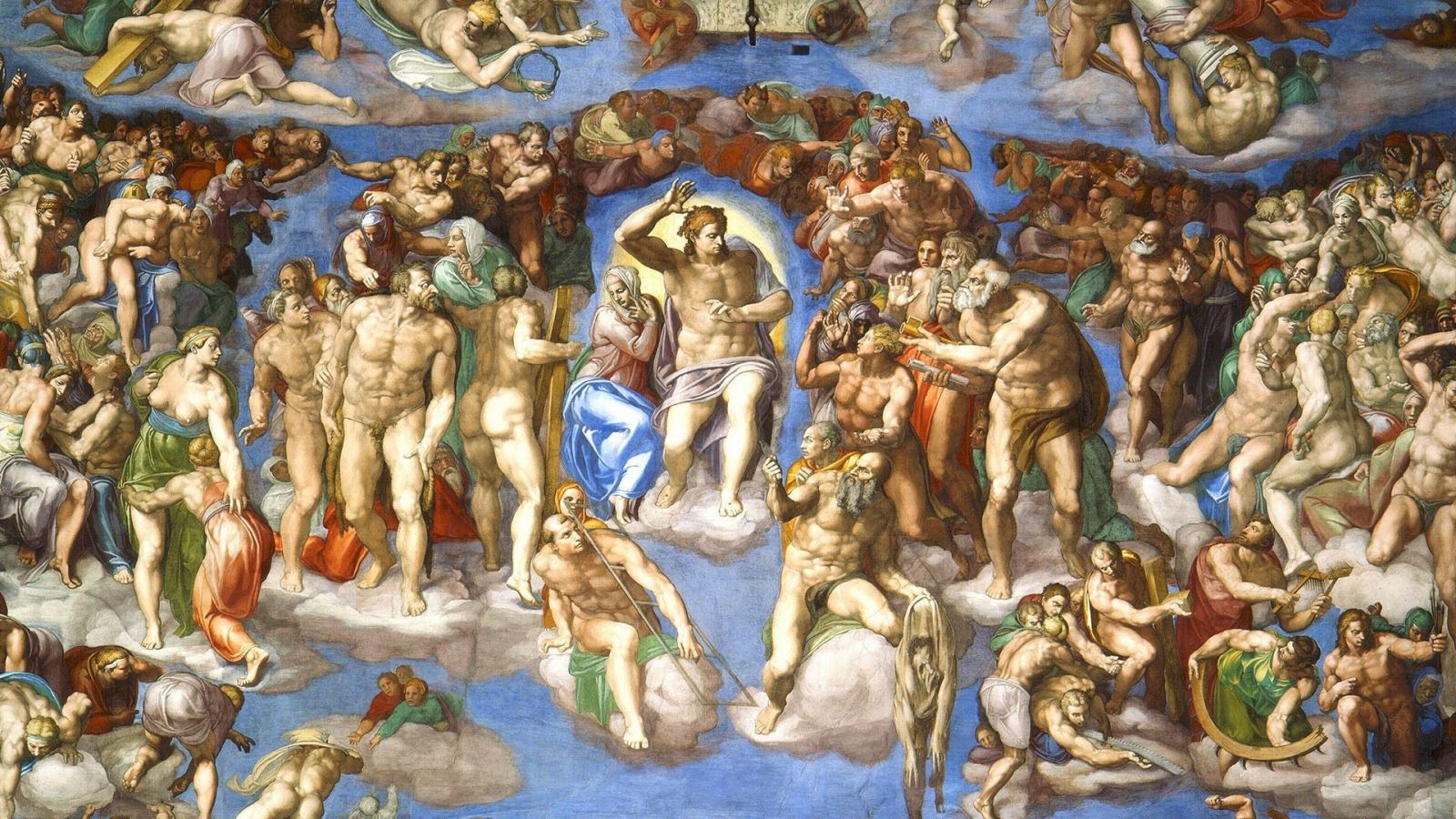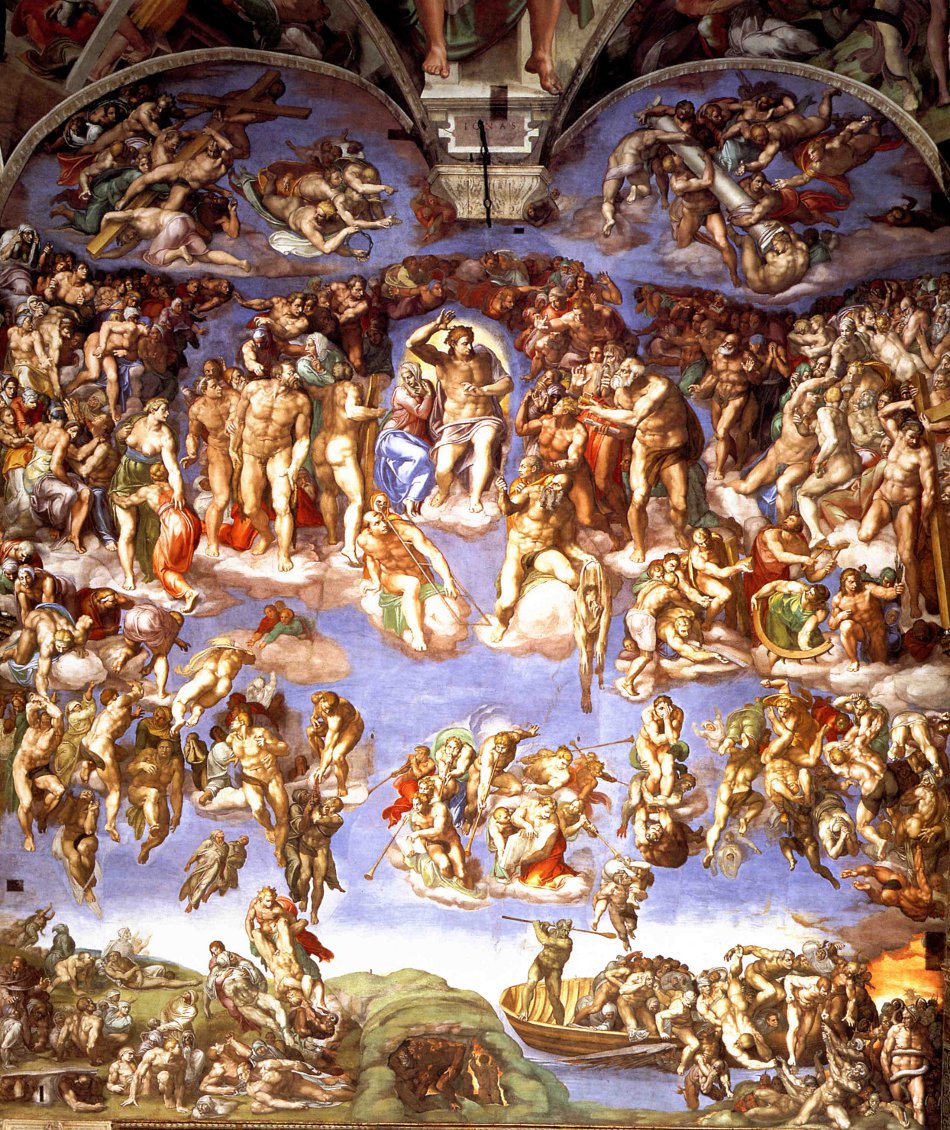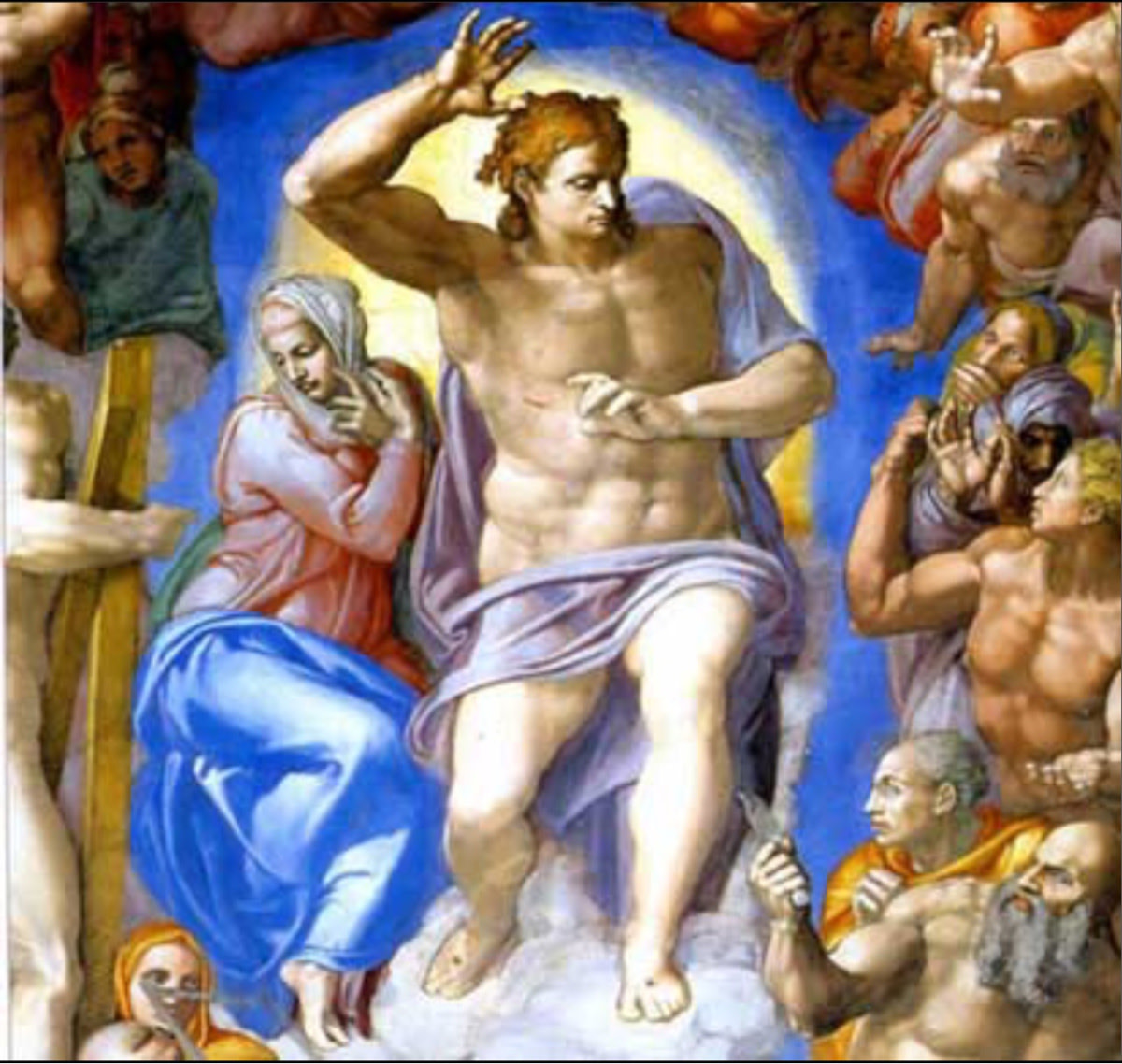It is a depiction of the Second Coming of Christ and the final and eternal judgment by God of all humanity. The souls of humans rise and descend to their fates, as judged by Christ who is surrounded by prominent saints. Altogether there are over 300 figures, with nearly all the males and angels originally shown as nudes; many were later partly covered up by painted draperies, of which some remain after recent cleaning and restoration.

The work took over four years to complete between 1536 and 1541 (preparation of the altar wall began in 1535). Michelangelo began working on it twenty-five years after having finished the Sistine Chapel ceiling, and was nearly 67 at its completion. Michelangelo originally accepted the commission from Pope Clement VII, but it was completed under Pope Paul III, whose stronger reforming views probably affected the final treatment.


In the lower part of the fresco, Michelangelo followed tradition in showing the saved ascending at the left and the damned descending at the right. In the upper part, the inhabitants of Heaven are joined by the newly saved. The fresco is more monochromatic than the ceiling frescoes and is dominated by the tones of flesh and sky. The cleaning and restoration of the fresco, however, revealed a greater chromatic range than previously apparent. Orange, green, yellow, and blue are scattered throughout, animating and unifying the complex scene.

The reception of the painting was mixed from the start, with much praise but also criticism on both religious and artistic grounds. Both the amount of nudity and the muscular style of the bodies has been one area of contention, and the overall composition another.
.jpg)

According to Wikipedia













